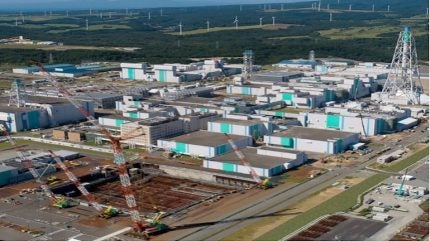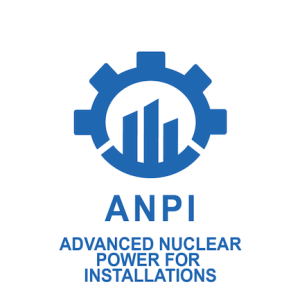
Japan has again adjusted its plans for reprocessing used fuel and producing mixed oxide (MOX) fuel – its pluthermal policy in order to try to reduce its growing stockpile of plutonium separated from used fuel, which is the subject of public and international concern.
In February 2024, the Japan Atomic Energy Commission (JAEC) stated: “Regarding the use of nuclear energy, Japan has been upholding the principle of not possessing plutonium without specific purposes. Under this principle and from the viewpoint of enhancing transparency concerning peaceful use of nuclear energy, Japan Atomic Energy Commission has declared the policy to reduce the amount of Japan’s plutonium stockpile in The Basic Principles on Japan’s Utilization of Plutonium published in July 2018.
However, this was contingent on operation of the reprocessing plant and MOX plant under construction at Rokkasho in Aomori Prefecture where plutonium would be reprocessed and used to make MOX fuel for Japan’s reactors. Completion of these plants have faced repeated delays. Construction of the 800-tonne-a year Rokkasho Reprocessing Plant (RRP) began in 1993 with a planned completion date of 1997. Construction of the 130 tonne a year MOX plant began in 2010. Japan Nuclear Fuel Limited now expects the two plants to be completed during fiscal years 2026 and 2027.
Currently only four of Japan’s operating nuclear units use MOX – units 3&4 of Kansai Electric Power company’s Takahama NPP; unit 3 of Kansai’s Ikata NPP; and unit 3 of Shikoku Electric Power Company’s Genkai NPP. Japan’s plutonium stockpile is expected to total around 44.5 tonnes in FY2026. Most of this is stored abroad in France and the UK where it has been sent for reprocessing withsome 8.6 tonnes held domestically.
Japan’s Federation of Electric Power Companies (FEPC) has reaffirmed the plutonium utilisation plan it announced in December 2020, subject to operation of the Rokkasho reprocessing plant and MOX fuel plant. FEPC represents the 11 power companies, comprising nine utilities (excluding Okinawa Electric Power), Japan Atomic Power Company and the Electric Power Development Company (J-Power).
“In Japan, where resources are scarce, we will secure stable energy in the future,” FEPC said. “In order to do so, it is essential to establish a nuclear fuel cycle in Japan. Despite changes in the environment surrounding nuclear power generation after the accident at the Fukushima Daiichi power plant, pluthermal [MOX] fuel remains important.” FEPC said, in line with the December plan it was aiming for early and maximum implementation of MOX use at least by 2030, with 12 nuclear unit using MOX by then.
FEPC also said it had decided to proceed with efforts to conduct a reprocessing demonstration study on spent MOX fuel in France, “aiming to establish reprocessing technology for used MOX fuel as soon as possible”.
FEPC said it has been working with related parties, including France’s Orano to conduct a reprocessing demonstration study to obtain the technical knowledge necessary for the practical application of used MOX fuel reprocessing. The study would look at “the properties of used MOX fuel and its impact on reprocessing equipment, and demonstrate that MOX fuel used at domestic nuclear power plants can be reprocessed in commercial plants”.
Orano, which had confirmed the detailed specifications of the used MOX fuel held by Kansai Electric, proposed increasing the amount of material in the study to enhance the data obtained. FEPC said it has now been granted approval for this increase by the Steering Committee of the Spent Fuel Reprocessing & Decommissioning Promotion Organisation.
The original 2023 plan had been to transport approximately 200 tonnes of used fuel from Kansai Electric’s Takahama NPP to Orano including 10 tonnes of used MOX fuel. This has now been increased to 400 tonnes including 20 tonne of used MOX fuel.
According the Japan Times, this came after Fukui Prefecture, home to several nuclear plants, urged Kansai Electric to address shrinking storage capacity for used fuel. At the Takahama plant, about 90% of the used fuel storage capacity has already been used and it will be full three years. The company initially planned to send its used fuel to Rokkasho. mainly to a reprocessing plant to be built in Aomori Prefecture, but the completion of the facility has been postponed.
In September 2024, the company notified Fukui Governor Tatsuji Sugimoto of its intention to review plans for dealing with the used fuel, and said that it would close three reactors in the prefecture if it failed to come up with a proposal that would satisfy officials there by the end of fiscal 2024.
Kansai said it had drawn up a new road map. This assumes Rokkasho (RRP) will start reprocessing in FY2027, and receiving used fuels in FY2028. “Regarding shipment of our used fuels to RRP, we will transport 198 tonnes (approximately 60% of the total reprocessing volume) over three years to FY2030.
As to the 400 tonnes to be sent to Orano, 100 tonnes will be shipped starting in FY2030. “From now on, we will steadily proceed to remove our used fuels out of Fukui Prefecture in line with this Road Map.”






